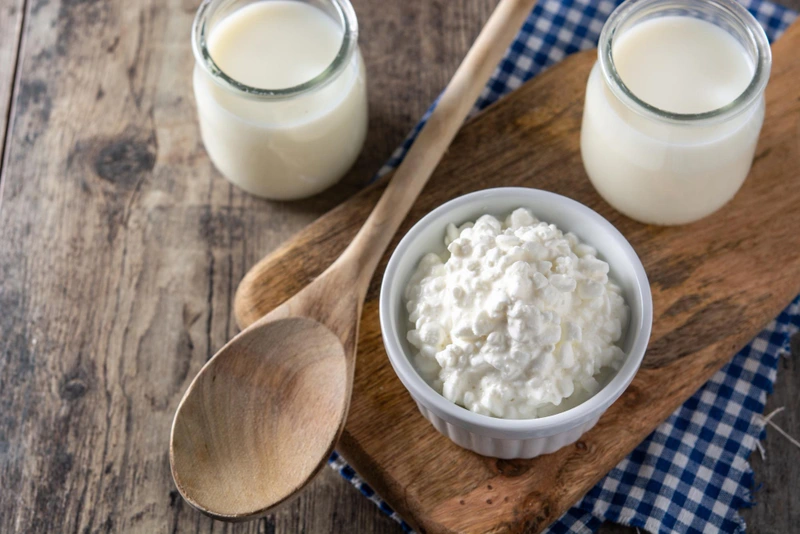- Published on: Jul 12, 2025
- 3 minute read
- By: Secondmedic Expert
Lipid Profile Test – Normal Range And Risks
Keeping your heart healthy isn’t just about staying active or eating green veggies. It also means knowing what’s going on inside your body—especially your cholesterol levels. One of the best ways to track this is through a lipid profile test.
If you’re wondering what this test means, what the numbers should be, and what risks you face if they're abnormal—this blog is for you.
Let’s dive into lipid profile test – normal range and risks in easy and clear language.
What Is a Lipid Profile Test?
A lipid profile test is a blood test that measures the amount of fat (lipids) in your blood. These lipids include different types of cholesterol and triglycerides.
The test helps evaluate your risk of heart disease, stroke, and clogged arteries.
What Does the Lipid Profile Test Measure?
A complete lipid profile usually measures:
-
Total Cholesterol – the overall amount of cholesterol in your blood
-
LDL (Low-Density Lipoprotein) – the “bad” cholesterol that can block arteries
-
HDL (High-Density Lipoprotein) – the “good” cholesterol that protects your heart
-
Triglycerides – a type of fat that provides energy but can cause heart issues in high amounts
Sometimes, the test also calculates VLDL and a cholesterol/HDL ratio to better assess your health risks.
Lipid Profile – Normal Range
Understanding what your numbers mean is key. Here are the recommended normal ranges:
|
Test Component |
Normal Range |
|
Total Cholesterol |
Less than 200 mg/dL |
|
LDL (Bad Cholesterol) |
Less than 100 mg/dL |
|
HDL (Good Cholesterol) |
40 mg/dL or more (men), 50+ (women) |
|
Triglycerides |
Less than 150 mg/dL |
Note: Values may vary slightly depending on labs and age. Always consult your doctor for interpretation.
Why Is This Test Important?
High cholesterol usually shows no symptoms. That’s why it's called a silent threat.
Your arteries may slowly get clogged without you knowing it, increasing the risk of:
-
Heart attacks
-
Strokes
-
Peripheral artery disease
-
High blood pressure
A lipid profile gives an early warning so you can make timely changes to protect your heart.
Risks of Abnormal Lipid Profile
Here’s what happens when the results are not in the normal range:
High LDL Cholesterol
-
Builds plaque in your arteries
-
Increases risk of heart attack or stroke
Low HDL Cholesterol
-
Reduces protection for your heart
-
Makes it easier for bad cholesterol to stick to artery walls
High Triglycerides
-
Can lead to pancreatitis and diabetes
-
Often linked with obesity and poor lifestyle
High Total Cholesterol
-
General risk marker for cardiovascular diseases
Causes of High Cholesterol or Triglycerides
-
Unhealthy diet (high in fried, fatty, and sugary foods)
-
Lack of physical activity
-
Smoking and alcohol consumption
-
Obesity
-
Diabetes or thyroid problems
-
Genetic/family history of high cholesterol
How to Improve Your Lipid Profile Naturally
If your test results are abnormal, you don’t always need medicine right away. Often, small changes in your lifestyle can bring big improvements.
Eat a Heart-Healthy Diet
-
Choose whole grains, fruits, vegetables, and lean proteins
-
Avoid processed food, red meat, and fried items
-
Include omega-3 rich foods like fish, flaxseeds, and walnuts
Exercise Regularly
-
30 minutes of walking, yoga, cycling, or swimming at least 5 days a week
Quit Smoking & Limit Alcohol
-
These habits lower HDL and increase LDL
Maintain a Healthy Weight
-
Losing even 5–10% of body weight can improve lipid levels
How and When to Take the Lipid Profile Test
When to Take:
-
Once every 12 months for adults above 30
-
More often if you have heart disease, diabetes, obesity, or a family history
Fasting Required?
Yes, you should fast for 8–12 hours before giving the blood sample for the most accurate results.
Can I Get This Test at Home?
Yes! Platforms like SecondMedic.com offer home sample collection for the Lipid Profile Test, powered by trusted labs like Thyrocare.
You just book the test online, and a technician collects the sample from your doorstep. Results are available digitally within 24–48 hours.
Total cholesterol over 240 mg/dL, LDL over 160 mg/dL, and triglycerides over 200 mg/dL are considered high-risk levels.
Conclusion
A lipid profile test is a simple yet powerful tool that gives deep insights into your heart health. Knowing the normal range and understanding the risks of abnormal levels can help you take control early and live a longer, healthier life.
Stay proactive about your health. Book a lipid profile test – normal range and risks checkup today and make heart-smart choices.
Read FAQs
A. It measures Total Cholesterol, HDL (good), LDL (bad), and Triglycerides.
A. Adults over 30 should test once a year or as advised by a doctor, especially if they have heart risk factors.
A. Yes, usually 8–12 hours of fasting is required before the test for accurate results.
A. It increases the risk of heart disease, stroke, and artery blockages. Lifestyle and medicines can manage it.
A. Yes, platforms like SecondMedic.com offer home collection for lipid profile tests, powered by Thyrocare.
Our Services
Request A Callback
Recent Posts
Is Curd Good or Bad for Acidity?
Aug 02,2025
Can Fatty Liver Be Reversed Completely?
Jul 31,2025
How Your Sleep Schedule Affects Digestion
Jul 28,2025
How to Spot Signs of Hormonal Imbalance in Men
Jul 26,2025
Do You Need a Digital Detox? Signs and Symptoms
Jul 25,2025










